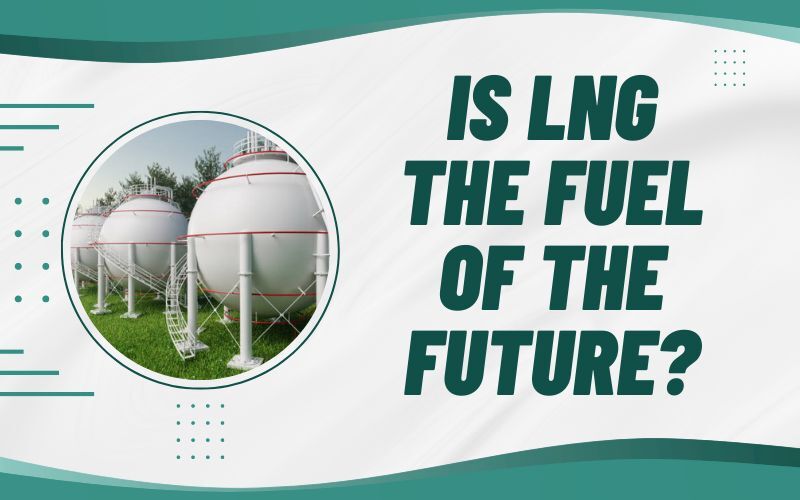Industrialization and urbanization are growing rapidly in the 21st century. Populations are also expanding, transportation needs growing, and standards of living improving, both in rural and urban areas. This growth has precipitated a sharp growth in energy demand across the world.
But then the world is grappling with pollution challenges that have been precipitated by the overuse of fossil fuel energy sources over the last century. We cannot continue relying on fossil fuels to power our households and industries, but then green energy sources such as wind and solar aren’t sufficient to meet the global energy needs at the moment. That is why Liquefied Natural Gas (LNG) is quickly becoming the unrivaled fuel of choice.
LNG is a fossil fuel, but it has lower sulfur and carbon emissions compared to other fossil fuels such as oil and coal. Can we, therefore, argue that LNG is the fuel of the future? Yes. LNG is a cleaner, greener fuel that will for many decades complement wind and solar in helping the world to achieve its target of 100% green energy.
LNG in Today’s Market
LNG is already a huge energy source across the world. In Asia, for example, LNG is the primary energy source for large-scale power generation in Bangladesh, China, the Philippines, India, and Thailand. Natural gas also features prominently in the import markets of these countries. And with this region experiencing rapid population growth, the demand for energy (the per capita energy consumption) is expected to keep growing into the foreseeable future. That means the demand for LNG isn’t slowing down any time soon.
LNG infrastructure has also grown tremendously over the last decades, especially with regard to transportation and storage. Traditional land-based terminals have been replaced by the more efficient floating storage and regasification unit (FSRU).
What makes floating systems more appealing is that they don’t require endless permits and approvals as is the case with land-based terminals. Furthermore, unlike land terminals, no time is wasted searching for the perfect site and constructing the necessary facilities. Such benefits give LNG the upper hand in the energy sector, now and in the future.
Due to their floating nature, LNG terminals allow for both secure and flexible operations. This is a key incentive for investors who fear putting their money into the energy sector due to political instability.
Investors can easily relocate their LNG infrastructure to stable political or economic environments in case their presence in a certain country is no longer tenable. Some of the key investors in this industry include Meg O’Neill of Woodside Energy, Alexey Miller of Gazprom, Joseph Sigelman, and Kevin Gallagher of Santos ltd. These and other investors guarantee continuity and sustained growth in the LNG sector in the coming years.
Winterization of LNG facilities is another current technology that’s helping LNG position itself as a key fuel source of the future. There now are axial ventilation systems that make it safe to produce and transport LNG at very low temperatures, heavy snowfall, etc.
The Future of LNG
Leading companies such as BP, Total, OPEC, and Shell are injecting billions of dollars into their LNG portfolios. They have graciously accepted LNG as a cost-effective and cleaner fuel solution. And because it helps the world cut its CO2 emissions, LNG will keep growing in popularity in both developed and developing nations. Natural gas will remain the key backup fuel for wind and solar energy for many years. Against the backdrop of the pandemic, and with the Russia-Ukraine war raging on, we can only predict continued growth in LNG consumption. This is the only fuel source that is not affected significantly by geopolitical crises. Forbes predicts up to a 40-50% rise in LNG consumption by the early-2040s.
Traditionally, the top exporters of LNG have been Malaysia, Indonesia, UAE, and Trinidad and Tobago. Bigger economies such as the U.S., Canada, Australia, and Russia have now grown to become top exporters of natural gas. This shift in supply will inject more competitiveness going forward. Another LNG producer that will cause shocks across the sector will be Mozambique. The sub-Sahara African country boasts huge offshore gas deposits, except that production is curtailed by endless violence and civil unrest. Once this unrest is sorted out, the supply of LNG especially in Africa’s developing regions will rise significantly.
Final word
Population growth, improved economic prosperity in developing nations, and favorable government energy regulations around the world will continue to drive demand for LNG. It will be interesting to see how the sector addresses its increasingly diverse markets, customers, and applications going forward.
Also Read: Good Business Ideas For Housewives in India With Low Cash




